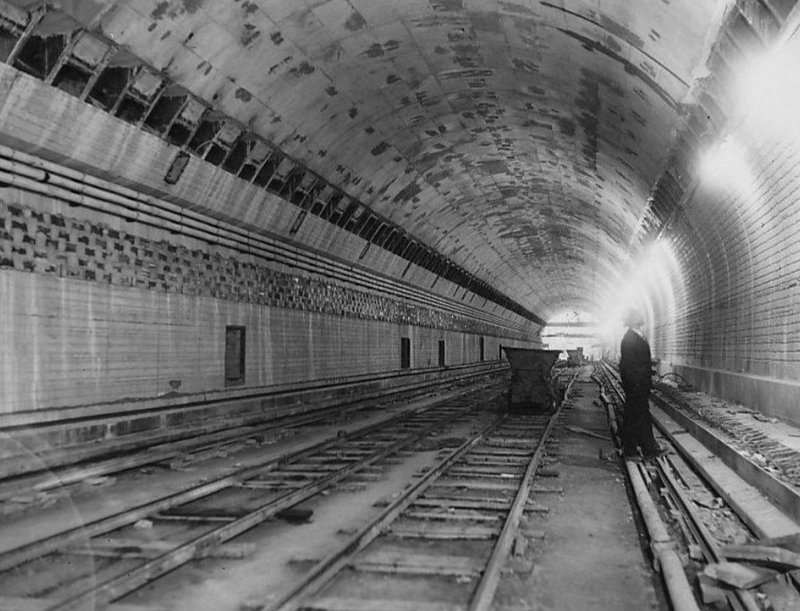9. Building the Lincoln Tunnel Was A Person’s Nightmare

Photo via Wikimedia Commons
Surprisingly enough, building a 1.5-mile tunnel large enough for two lanes of automobiles under a riverbed was a daunting task. The process itself was grueling. To support the cavities workers dug out, they installed a series of 21-ton iron rings set into the walls. The ones who dug the tunnels, called sandhogs, had to use a series of airlocks to depressurize and re-pressurize their bodies while entering a new section of the tunnel. With no ventilation, the air in each pressurized section got stale pretty quick.
The excavation involved digging, lining the walls with the rings, pouring cement into every crease and crack to the keep the water out, and finally moving along to the next airlock. Incidentally, Clifford Holland, chief engineer and namesake of the Holland Tunnel, died of a heart attack at 41 due to the immense stress of the construction as well as the growing toxicity of the air in the airlocks. The Lincoln Tunnel faired better, with no reported work-related deaths.





